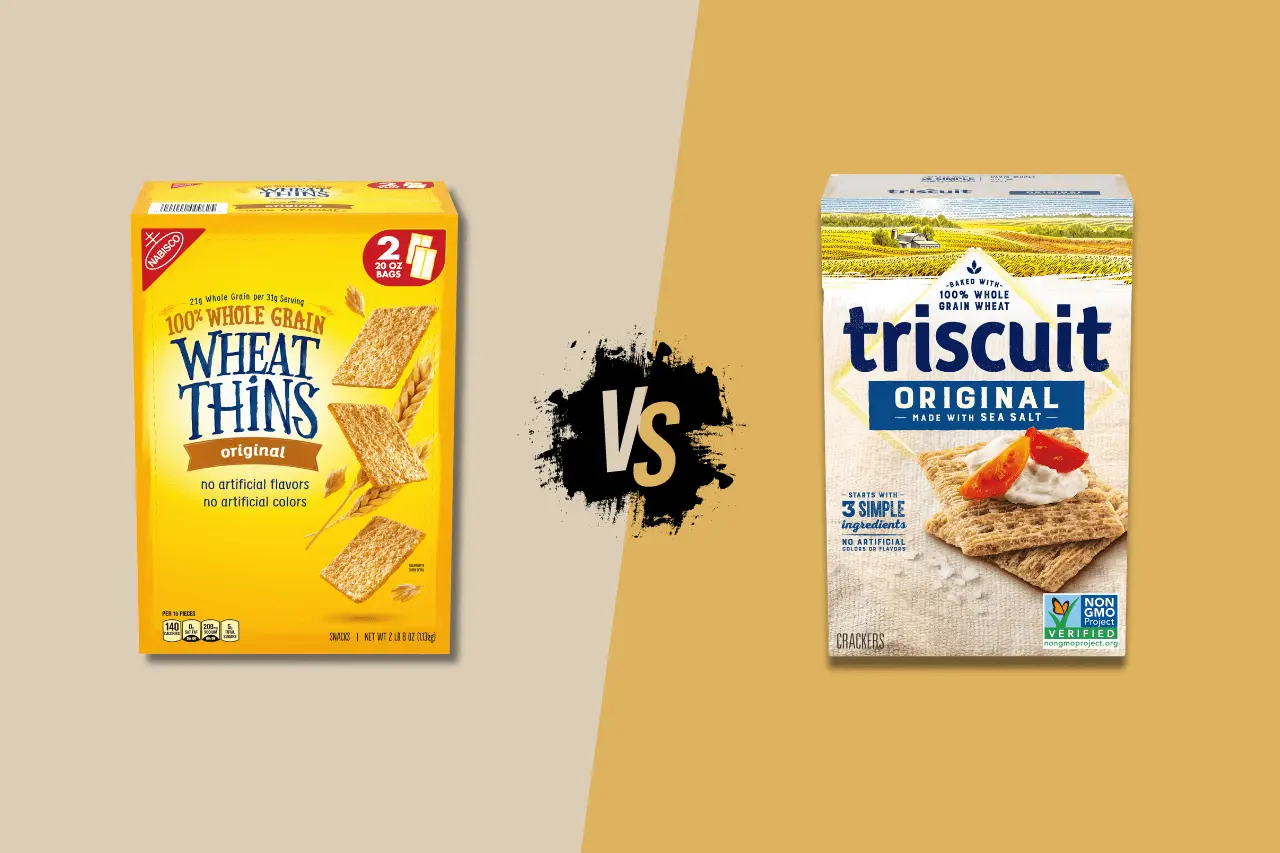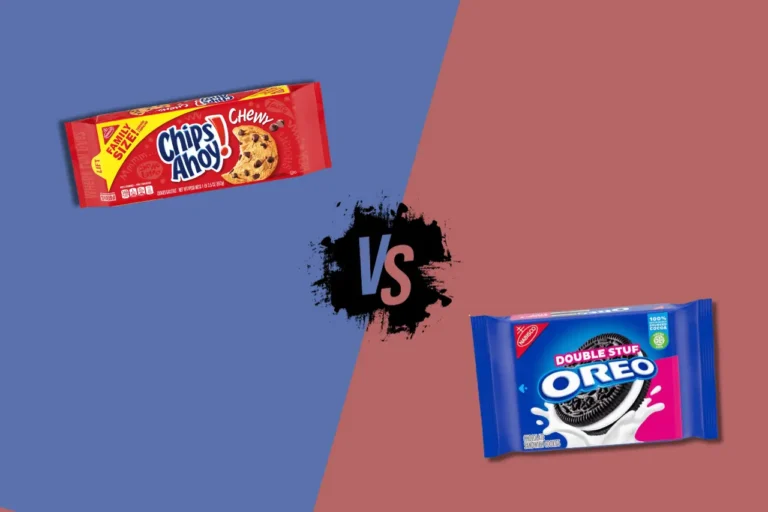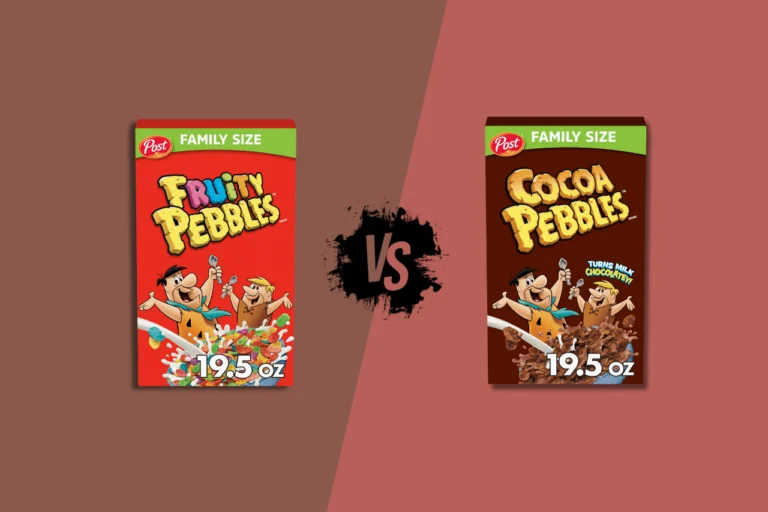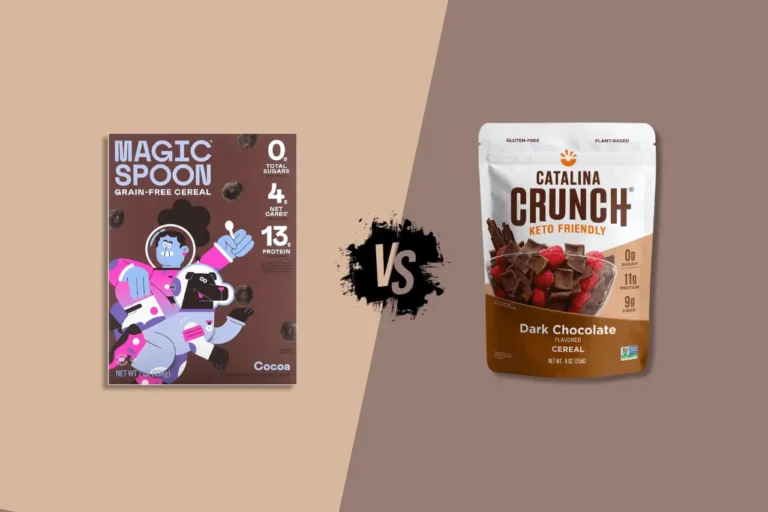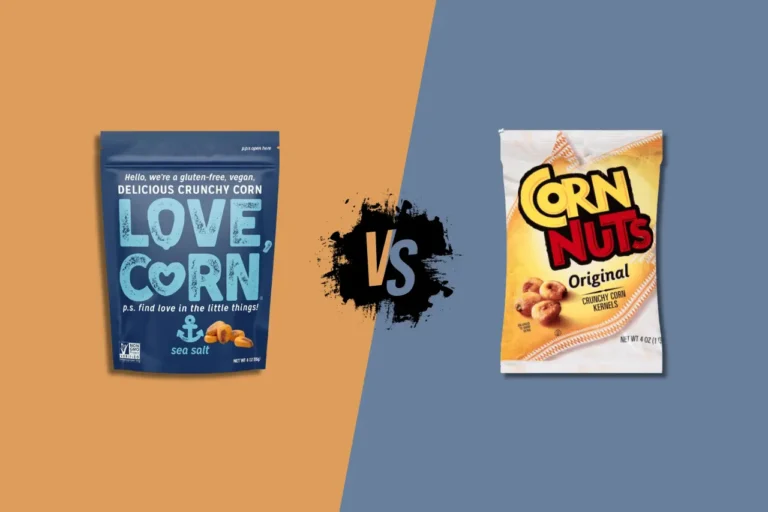When it comes to crackers, Wheat Thins and Triscuits are two of the most popular options you’ll likely encounter.
Wheat Thins offer a crispy, golden-brown crunch. On the other hand, Triscuits have a hearty, woven texture and a reputation for being simple and natural.
Both crackers are made from whole grains and come in multiple tempting flavors.
However, when it comes to choosing, which one is more healthier?
Wheat Thins or Triscuits?
Short answer: Triscuits are healthier than Wheat Thins because they have more protein and fiber, less calories, little to no added sugar, less sodium overall, and few additives.
Read on for a detailed comparison of Wheat Thins and Triscuits in terms of their ingredients and nutritional value.
Read also: Golden Grahams Vs Cinnamon Toast Crunch: Which One Is Healthier?
Wheat Thins Vs Triscuits: Ingredients
Ingredients in Wheat Thins
Wheat Thins come in multiple flavors such as original, reduced fat, tomato & basil, and a hint of salt.
Therefore, exact ingredients can vary depending on the flavor.
In general, Wheat Thins are made up of 100% whole-grain wheat flour as the primary ingredient.
Other common ingredients that you would find across most flavors include:
- Canola oil
- Sugar
- Cornstarch
- Malt syrup
- Salt
- Refiner’s syrup
- Leavening
- BHT (added to packaging material)
Ingredients in Triscuits
Triscuits come in multiple flavors such as original, roasted garlic, cracked pepper & olive oil, rosemary & olive oil, zesty jalapeno, four cheese & herb and more.
Therefore, exact ingredients can vary depending on the flavors.
In general, Triscuits are also made with 100% whole-grain wheat as the primary ingredient.
Other common ingredients that you would find across most flavors include:
- Canola oil
- Salt
- Rice starch
- Maltodextrin
- Natural flavor
- Sugar
The verdict
When it comes to ingredients, both Wheat Thins and Triscuits are really good options.
Both crackers are made with 100% whole-grain wheat and do not contain artificial additives.
However, when choosing one, Triscuits come out as healthier options in terms of ingredients.
Here’s why.
- Wheat Thins have various added sugars, including regular sugar, malt syrup, and refiner’s syrup.
- Wheat Thins contain more additives like malt syrup, cornstarch, refiner’s syrup, and BHT preservative. Triscuits have fewer additives.
- Some flavors of Triscuits contain extra virgin olive oil, which is a plus.
- Unlike the flavors of Wheat Thins, the majority of Triscuit flavors don’t contain any added sugar.
Wheat Thins Vs Triscuits: Nutrition
Sugar
Wheat Thins: 4 to 5g sugar per serving
Triscuits: 0 to <1g sugar per serving
When it comes to sugar, Wheat Thins and Triscuits are on opposite ends of the cracker spectrum.
Wheat Thins contain 4-5g of sugar per serving from ingredients like regular sugar, malt syrup and refiner’s syrup.
Meanwhile, Triscuit contains zero or less than 1g of sugar per serving.
Even though Wheat Thins don’t have a lot of sugar, Triscuits are a better choice if you’re trying to limit your sugar intake.
Calories
Wheat Thins: 120-140 calories per serving
Triscuits: 120 calories per serving
When it comes to calories, there isn’t a big difference between Wheat Thins and Triscuits.
Both offer around 120-140 calories per serving.
However, Wheat Thins land on the slightly higher end of that calorie range. The added sugars in Wheat Thins pack extra calories many Triscuit varieties lack.
Triscuits are consistent with most of its flavors, containing 120 calories per serving.
Fat
Wheat Thins: 3.5 to 5g fat per serving
Triscuits: 3.5 to 4.5 fat per serving
Wheat Thins and Triscuits are again quite similar when it comes to fat.
Both deliver 3.5-5g of fat per serving, keeping the crackers relatively light for snacking.
What’s good?
Both crackers are good sources of healthy fats.
Carbohydrates
Wheat Thins: 21 to 22g carbs per serving
Triscuits: 20-21g carbs per serving
Wheat Thins and Triscuits are neck and neck carbs-wise, providing around 21g per serving.
But there’s an important difference in where those carbs come from.
For Triscuits, the carbs come purely from the whole-grain wheat base. However, in wheat Wheat Thins 4-5g of total carbs comes specifically from added sugars.
Protein
Wheat Thins: 2g protein per serving
Triscuits: 3g protein per serving
When it comes to protein, Triscuits edge out Wheat Thins with 3g per serving compared to 2g.
While an extra gram may not seem like much, every bit counts in boosting your daily protein intake.
All of the protein in both crackers comes from whole-grain wheat.
Fiber
Wheat Thins: 2 to 3g fiber per serving
Triscuits: 3g fiber per serving
When it comes to fiber, Triscuits once again have a slight advantage over Wheat Thins.
Triscuits are consistent with containing 3g of fiber across all flavors, while Wheat Thins provide 2-3g.
Sodium
Wheat Thins: 55 to 200mg sodium per serving
Triscuits: 115 to 160mg sodium per serving
When it comes to sodium, Wheat Thins and Triscuits are again fairly close competitors.
But Triscuits contain slightly less sodium overall, making it a better option for a heart-conscious diet.
Final words: Which one is healthier?
While both crackers are good options to include in your diet, Triscuits are more healthier.
There are many reasons for this, such as:
- Triscuits have more protein and fiber.
- Triscuits have less calories.
- Triscuits do not contain added sugar or are extremely low in sugar.
- Triscuits contain less additives.
- Triscuits are lower in sodium overall.
However, this doesn’t mean you cannot enjoy Wheat Thins.
Wheat Thins can absolutely still be part of a balanced diet. If you prefer the taste of Wheat Thins, there’s no need to swap them out.
But when choosing the healthiest option, Triscuits come out ahead of Wheat thins.
Found this information helpful? Share it.
Here are a few other posts that might also be helpful for you.
